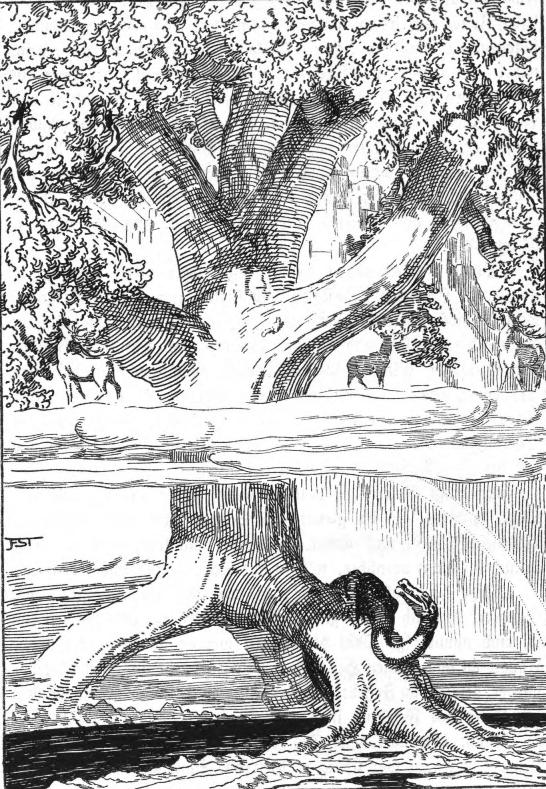yggdrasil the straddler.
In the some cosmological depictions of Yggdrasil, there's an awkward stretching weirdness in order to make the World Tree's roots reach up or around to get to Asgard, Jotunheim, and Niflheim. Franz Stassen's 1920 CE illustration of Yggdrasil from Hans von Wolzogen's Die Edda has instead turned Yggdrasil into a monumental straddler, majestically arching over and into its three foundational worlds. This places those worlds level & below the axial trunk, here with Niflheim in the right foreground (with destructive Níðhöggr camped on that root), Jotunheim's tall mountains at left, and the last root reaching into Asgard at the back, though we maybe can see its gargantuan godly halls rising through the branches above. This makes for a more tree-centric & structurally elegant arrangement in some respects. Stassen was also noted for his illustrations in Wagner's Ring.
If we stop to consider Yggdrasil being organic, subject to external forces, and change, then the idea of it having fixed positions for the worlds then changes too, which then means the adjacency & distance of the worlds from each other also shifts.
Guillermo Maytorena IV knew there was something special in the Norse Lore when he picked up a copy of the d'Aulaires' Norse Gods and Giants at age seven. Since then he's been fascinated by the truthful potency of Norse Mythology, passionately read & studied, embraced Ásatrú, launched the Map of Midgard project, and spearheaded the neologism/brand NorsePlay. If you have employment/opportunities in investigative mythology, field research, or product development to offer, do contact him.


Comments
Post a Comment